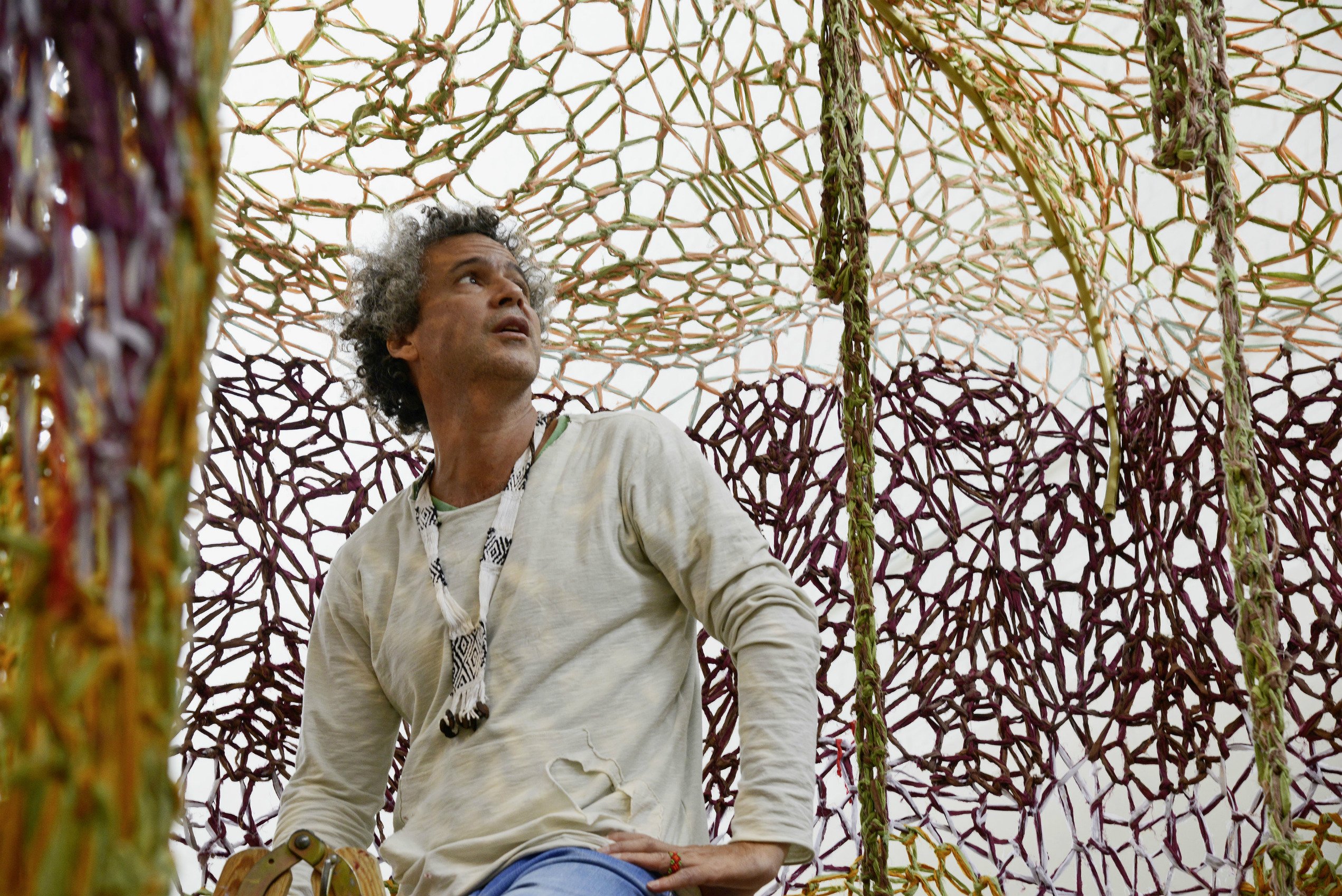
The Brazilian artist Ernesto Neto is creating a spectacular installation that will bring the spirit of the Amazonian rainforest—and possibly some of its inhabitants—to Zurich’s main train station this summer. Called GaiaMotherTree, the project organized by the Fondation Beyeler is due to be unveiled in at the end of June.
In July, Neto will transform the busy concourse into a meeting space beneath a “tree canopy,” which is handmade from strips of cotton colored with natural dyes. The 66-foot-tall sculpture’s hanging “branches” will be filled with aromatic spices and dried leaves. Beneath the canopy, visitors can access a meeting place designed by the artist through a tunnel.
Sam Keller, the director of the Fondation Beyeler in Riehen, near Basel, told artnet News that the Swiss train station is Europe’s equivalent to New York’s Grand Central and estimates that “nearly half a million people” pass through the concourse daily. He hopes that Neto’s installation will become Switzerland’s most-visited work of contemporary art ever. Visitors traveling through Zurich to Art Basel, which runs June 14 through 17 will have to book a return journey as Neto’s installation runs June 30 to July 27.
The installation is the Beyeler’s most ambitious public art project in 20 years, Keller said. It is matched only by Christo and Jeanne-Claude’s Wrapped Trees (1997–98), for which the artists covered more than 100 trees with fabric in the meadows surrounding the private museum.
Zurich’s historic train station. Photograph courtesy of Fondation Beyeler.
GaiaMotherTree will be more than a “marvelous sculpture,” Keller said—it will also form a space for meditation, education, and public programming “in the middle of this busy railway station.”
The event could also see a visit to Europe from the Huni Kuin, the indigenous people living in the Amazon near Brazil’s border with Peru. A delegation traveled to Italy for the preview of last year’s Venice Biennale to help inaugurate Neto’s work at the Arsenale, which was similarly inspired by the Huni Kuin’s traditions and rituals.
Keller, who was sorting out visas for the visiting Huni Kuin at the end of last year, confirmed that part of the ancillary programming would engage indigenous people “not just from Brazil, but from different places.” Music, workshops, guided tours, and talks are due to take place inside the installation, which is co-organised by Keller and and Michiko Kono, an associate curator at the Fondation Beyeler.